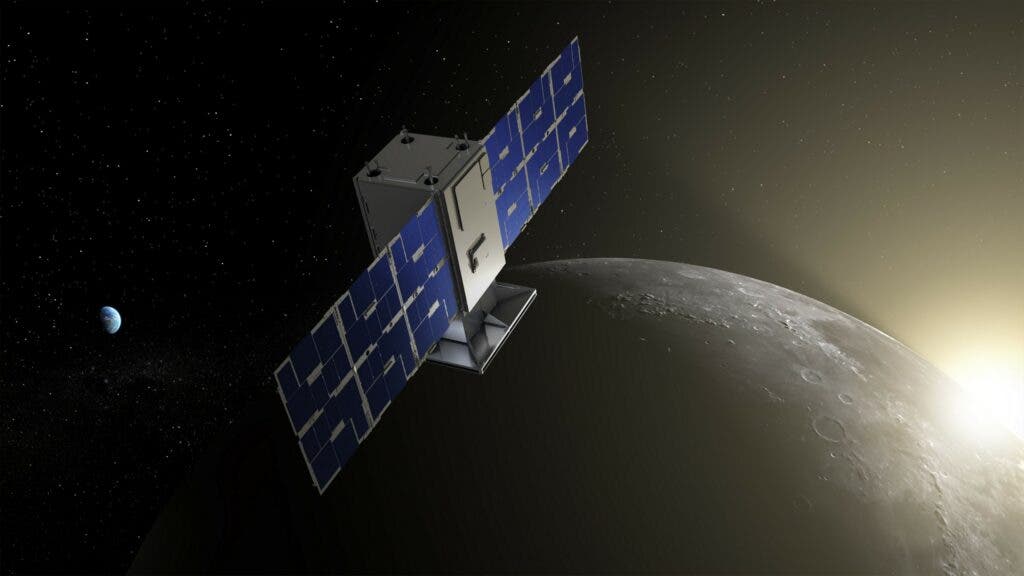A microwave oven-sized NASA spacecraft just arrived in the Moon’s orbit on Sunday evening. This diminutive craft has thus become the first cubesat to ever reach our planet’s natural satellite, and will help NASA better understand how to place ships into its orbit.

Weighing in at just 55 pounds (25 kgs), the cubesat will be the first ship to test out a unique, elliptical lunar orbit, to see if it is a viable parking spot for craft sent to orbit around the moon. The CubeSat is the first craft launched as part of the Cislunar Autonomous Positioning System Technology Operations and Navigation Experiment (CAPSTONE).
Testing of the dynamics of this halo-shaped, near-Moon orbit serves to establish a reliable stepping stone for Gateway, a Moon-orbiting outpost that is part of NASA’s Artemis program.
Small but daring
CAPSTONE completed its four-month journey Sunday afternoon, according to a NASA press release, by firing its thrusters to enter the Moon’s orbit. While here, CAPSTONE will come within 1,000 miles of one lunar pole on its near pass and 43,500 miles from the other pole at its peak every seven days.
This elliptical orbit is being tested for viability as any craft that enters it should use up much less fuel to stay in orbit compared to a regular, circular orbit. Now that it is in place, CAPSTONE will try to validate the power and propulsion requirements estimated by NASA’s models, to reduce uncertainties. It is also tasked with performing spacecraft-to-spacecraft navigation solutions and communication with Earth.
Boiled down, CAPSTONE is the Moon’s first satellite, performing some of the key roles such devices handle above our own planet.
NASA plans for the cubesat to communicate directly with the Lunar Reconnaissance Orbiter, which will serve as a reference point. Based on its position, CAPSTONE will measure how far it is from the LRO and how fast the distances between them change — allowing it to calculate its own position in space.
These experiments will be used to evaluate the performance of the autonomous navigation software that CAPSTONE carries, christened the Cislunar Autonomous Positioning System (CAPS). If successful, CAPS will allow future spacecraft to determine their own location independent of tracking from Earth, allowing us to free up valuable ground-based sensor capacity for scientific use, instead of routine tracking of spacecraft.
The orbit that CAPSTONE is on currently, a near-rectilinear halo orbit or ‘NRHO’, is the same one that will be occupied by Gateway, the Moon-orbiting space station that NASA has planned as a base of operations of their Artemis mission. As such, a lot hangs on the performance of the tiny satellite
Now that it has finally arrived at NRHO, CAPSTONE will perform “two additional clean-up maneuvers to refine its orbit”, according to NASA. After this, ground control will review the data to see whether it can remain on track on NRHO as planned.









